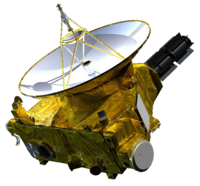
Photo from wikipedia
Carrier phase cycle slips can be an important source of error in precise Global Navigation Satellite System (GNSS) positioning. In such cases, cycle slips can seriously compromise the positioning accuracy… Click to show full abstract
Carrier phase cycle slips can be an important source of error in precise Global Navigation Satellite System (GNSS) positioning. In such cases, cycle slips can seriously compromise the positioning accuracy and reliability, especially for single-frequency receivers, which do not provide simultaneous measurements at different frequencies to generate effective linear combinations for cycle slip detection. We introduce a high-rate Doppler-aided cycle slips detection and repair (DACS-DR) method to detect and repair cycle slips in single-frequency low-cost GNSS receivers, which benefit from the availability of high-rate Doppler measurements. The distributions of the residuals of the time-differenced carrier phase minus the carrier phase change derived from Doppler observations are analyzed systematically under different sampling rates. A comparison is further performed between the low-cost and high-end receivers. Considering that the loss of lock indicator (LLI) output by receivers can also reflect the condition of cycle slips, the reliability of the LLI is also discussed based on our experimental receiver. Based on these analyses, the DACS-DR method is used in a float-PPP experiment with a data set collected under a difficult situation: a high-latitude urban canyon (Akureyry, northern Iceland, Dec. 2017) with intense ionospheric scintillation. The results demonstrate that the convergence time, positioning errors, and the number of re-convergence events are all significantly reduced with the proposed method. Furthermore, the RMS values of the positioning errors in the horizontal and vertical directions are improved by 44.2% and 21.2%, respectively.
Journal Title: GPS Solutions
Year Published: 2020
Link to full text (if available)
Share on Social Media: Sign Up to like & get
recommendations!